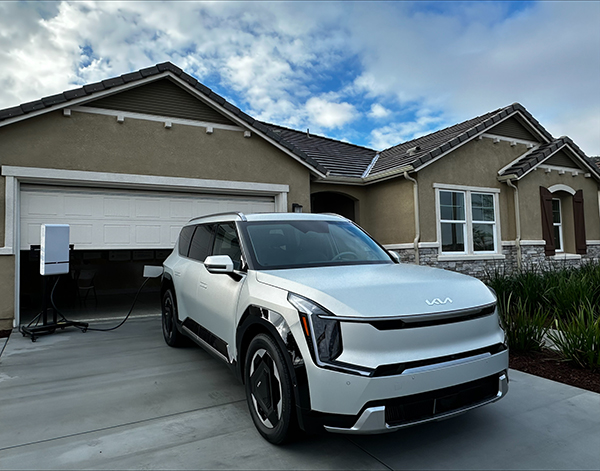
“This initiative illustrates the importance of collaboration between academia and industry,” said Samueli School of Engineering Professor
Scott Samuelsen, project director and APEP founding director. “Real-world deployment of bidirectional charging
is essential for gathering the data, and the technical and customer adaptation insights needed to scale V2H deployment across the grid.”
Six homes in Menifee, California, have been successfully outfitted with the ability to tap energy from an electric vehicle (EV) to power home loads during both grid-tied and islanded (off-grid) conditions. This marks the first demonstration of vehicle-to-home (V2H) technology for the mass market utilizing two purpose-built commercial products -- a bidirectional charger and a mass market V2H-enabled SUV.
“This initiative illustrates the importance of collaboration between academia and industry,” said Samueli School of Engineering Professor Scott Samuelsen, project director and APEP founding director. “Real-world deployment of bidirectional charging is essential for gathering the data, and the technical and customer adaptation insights needed to scale V2H deployment across the grid.”
One of the key benefits of V2H is the potential to lower homeowner electricity costs by using stored energy when rates are highest (e.g., during the 4-8 p.m. peak demand). A second benefit is to capture renewable energy from roof-mounted solar panels stored during the day that would otherwise be sent to the grid and use the captured energy to serve home loads at another time. In both cases, V2H relieves strain on the grid.
During a grid outage, another benefit of V2H is to keep the home energized for several days given that the energy density of the vehicle battery is up to 10 times that of typical home batteries.
V2H also provides environmental benefits by reducing air pollutant emissions from power plants serving the grid, and by providing a clean alternative to purchasing a gasoline powered combustion back up home generator.
– Scott Samuelsen and William Gary, UC Irvine APEP